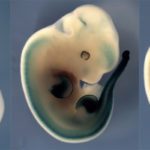Link to Pubmed [PMID] – 19087242
Genome Biol. 2008;9(12):R172
BACKGROUND: Changes in gene regulation are suspected to comprise one of the driving forces for evolution. To address the extent of cis-regulatory changes and how they impact on gene regulatory networks across eukaryotes, we systematically analyzed the evolutionary dynamics of target gene batteries controlled by 16 different transcription factors.
RESULTS: We found that gene batteries show variable conservation within vertebrates, with slow and fast evolving modules. Hence, while a key gene battery associated with the cell cycle is conserved throughout metazoans, the POU5F1 (Oct4) and SOX2 batteries in embryonic stem cells show strong conservation within mammals, with the striking exception of rodents. Within the genes composing a given gene battery, we could identify a conserved core that likely reflects the ancestral function of the corresponding transcription factor. Interestingly, we show that the association between a transcription factor and its target genes is conserved even when we exclude conserved sequence similarities of their promoter regions from our analysis. This supports the idea that turnover, either of the transcription factor binding site or its direct neighboring sequence, is a pervasive feature of proximal regulatory sequences.
CONCLUSIONS: Our study reveals the dynamics of evolutionary changes within metazoan gene networks, including both the composition of gene batteries and the architecture of target gene promoters. This variation provides the playground required for evolutionary innovation around conserved ancestral core functions.

